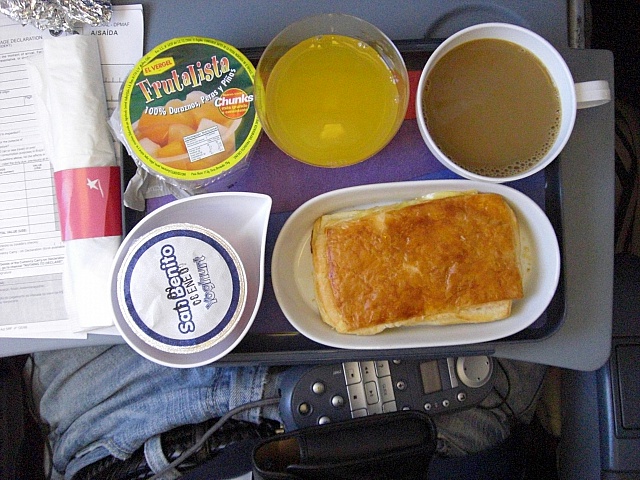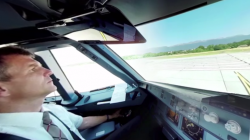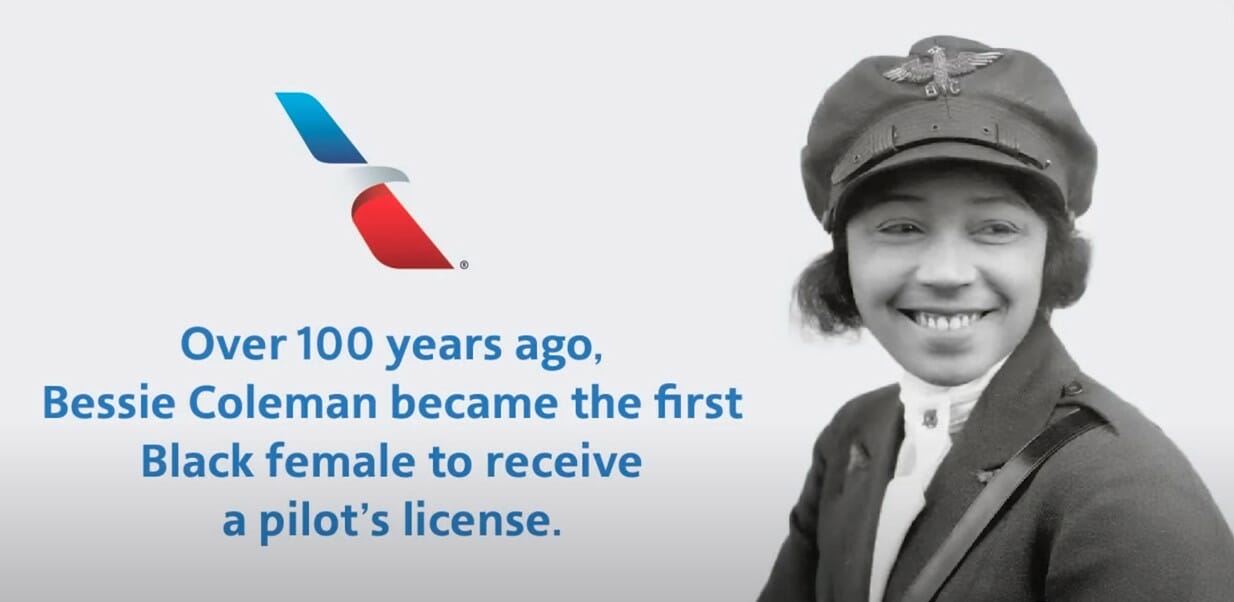
An economy class meal I received on LAN Airlines, enroute from Santiago, Chile to Rio de Janeiro, Brasil in December 2008.
If you’re like me, and grew up in the 1990’s, you may still possess fond memories of receiving complimentary in-flight meal service on domestic sectors within a 2-hr window. After 9/11, most airlines cut back significantly on catering in coach cabins as the industry went into a downturn. The cost savings were pretty substantial – even the highly disliked bistro bag did not last long.
In lieu of complimentary in-flight meals, most domestic U.S. carriers have resorted to offering buy-on-board options for travelers, which has its mutual benefits as it drives ancillary revenue for the airlines, whilst also still providing nourishment for starving passengers. For most U.S.-based travelers, one can only expect to receive a hot meal service if they’re flying in a premium class cabin, or on a long-haul intercontinental flight.
Nevertheless, despite how in-flight meal service is pretty much a distant memory for most travelers, one cannot forget to fathom the amount of effort and preparation involved with getting a steak off the ground – along with the fuel, cargo, luggage, and passengers – onboard the aircraft. The effort required from the grounds crew prior to takeoff, the flight attendants serving the meals in the air, and the cleaning crews on the ground, is actually quite a labor-intensive process.
A few days ago, I stumbled across this brilliant blog called the Cockpit Chronicles. Written by Kent Wien, a Boston-based co-pilot for a major U.S. carrier, the site features some insider revelations of what goes on in the airline industry, written uniquely from the perspective of a seasoned domestic and international pilot. I’ll definitely be revisiting his pages in the future for some cool content!
One entry that Captain Wien recorded a few months ago features the “behind the scenes” preparation for crew meals on board international long-haul flights. Naturally, we often forget that pilots need to eat as well! Ordinarily, the Captain and the Co-Pilot are presented the meal choices served to the premium class cabin, and in this posting, Captain Wien writes:
“Now, after ten years of international flying, mostly to Europe, I’ve enjoyed more crew meals than I probably should have. Warm dishes on an airline flight might be foreign to today’s passengers and even some of our domestic pilots, but on the international side we still enjoy food just as it was in the earlier days of airline flying.”
As such, the familiar routine of warm nuts all the way to the decadent sundaes are still very much at large for the cabin crews. Captain Wien admits that while such a spread can and ought to be enjoyed by a normal paying premium class passenger, for an airline crew, this can “add more pounds in the first year of international flying than during a freshman year in college,” he writes.
A bonus to his posting was a video of Susan, a flight attendant who demonstrates how premium meals (for both business class passengers and the cockpit crew) are prepared on a long-haul flight. This video was filmed on an American Airlines flight from Rio de Janeiro to New York JFK.
Some trivia and highlights from this very interesting video that you probably weren’t aware of:
- The first thing a Flight Attendant must do on a plane is prepare the coffee. Afterward, she must assemble an “insert” of beverages to be delivered to the cockpit crew once the plane has reached cruising altitude, so that the Captain and Co-Pilot do not have to worry about these things in-flight.
- Once the meal choices for the cockpit crew have been prepared (always prior to the premium cabin) the FA presents the options (often there are three). The Co-Pilot usually defers to the Captain to make the first selection, as they cannot choose the same meal in case one of them falls ill due to food poisoning, which would be disastrous if both were affected.
- Contrary to popular belief, the galleys on widebody aircraft do not contain microwaves nor refrigerators; instead, food is heated purely in ovens and colder items are cooled using dry ice “chillers.” Pretty amazing how the attendants have such few resources to “prep” the food and rotate cycles.
Below is the video embedded of “Susan” and a link to the article. Enjoy!
[youtube=https://www.youtube.com/watch?feature=player_embedded&v=hi4UP9VhPX8]
Link to article: “Food in the Cockpit: How it is prepared and served.”




